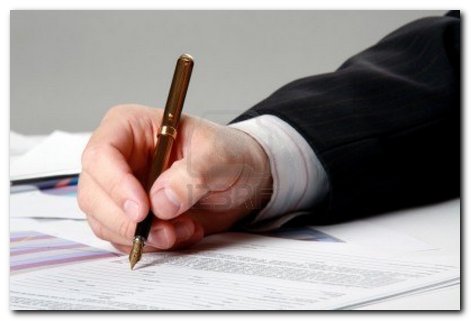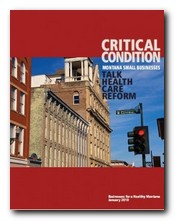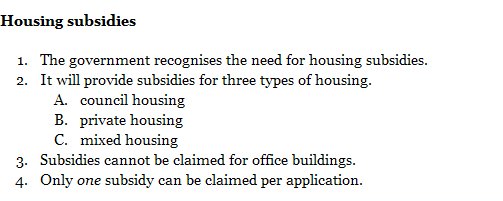effective business communication skills
What is a business document?
A business document can be any form of writing connected with commerce, administration, government, industry, or non-personal communication — any of the following:
- Business letter
- Commercial invoice
- Delivery order
- Executive summary
- Five year plan
- Invoice
- Memorandum
- Purchase order
- Annual report

These are normally documents printed onto paper, but modern business also includes documents in the form of email messages, web pages, Powerpoint presentations, and online instruction manuals.
You should follow the same principles for writing such documents, no matter in which form they will finally appear.
Five stages of planning
There are five basic stages in the process of writing a business document.
If you are conscious of each one as a separate activity, it will help to make the task of writing a business document easier.
- Visualise the document
- Determine the content
- Create a structure
- Write the first draft
- Make any revisions
Visualise the document
Visualise the finished document as a material object. We now know that visualisation is a great aid to achievement.
For this stage you need to know what the business document looks like. Make sure you have at least one good example of the following:
- a letter
- a report
- a proposal
- a memo
- a bulletin
Keep these examples in a handy place in your office where you can refer to them at any time. It is a good idea to keep them in a binder, each in its own plastic wallet, so that you can browse and find them easily.
Set up some templates in your word-processor which correspond to the list of document types shown above. This way, you save yourself the repeated task of creating a new layout for every document.
Your templates should conform to the principles outlined in How to Write a Report as follows:
- Modules — write text in bite-size chunks
- Relevance — one topic only – exclude anything which doesn’t belong
- Navigation — use headings and sub headings to guide your reader
- Consistency — of vocabulary, expression, layout, visual features
- Hierarchy — multi level text with correspondence between levels
Writing the content
Be sure you know exactly what it is you need to write. If you are not sure about your purpose, it makes the writing more difficult.
Here are some tips for making sure that you start out with a confident and accurate idea of what is required.
Write down the purpose(s) of your document and the response you require.
Put yourself in the place of the person receiving the letter. Answer the three crucial questions yourself before you start writing your document. There are three questions a reader asks about a document:
- What is this? — a letter, proposal, memo, report
- What’s it about? — new rules, I’m fired, I’m going on a trip
- What do I do? — reply, accept an invitation, disagree with the points, give my permission
Creating the structure
Create an overall structure using diagrams or titles in a hierarchy. This will give you confidence – because you can see the complete outline of your document before you fill in the detailed content.
Create a structure using a form you find useful:
- Lists of topics — every important topic you wish to include
- Diagrams — which works for you – spider, matrix, mind-map
- Boxes — a page with several rows of blank boxes, each representing a level of your document
This writing strategy will also deter you from meandering from the topic, because you are writing your text according to the part titles you have created.
You may also wish to use the OUTLINER facility in your word-processor.
You can also create an overall structure using working titles in a hierarchy. Make up quick working titles for your modules chapters and sections.
Don’t agonise about them. You can always change them easily after you have written your draft document.
Here’s an example of an outline in titles
- New services available
- Advantage to customer
- New pricing structure
- Special discounts
- Ordering details
- Names, contacts, numbers
If the document contains a lot of material which needs to be organised in some way or other, use one of the common approaches to creating structure. The parts can be arranged in –
- logical progression
- increasing significance
- equal significance
- chronological order
- narrative sequence
- category groupings
Document titles
There are three kinds of title in business documents.
- function title
- topic title
- combination title
A function title — tells your reader what the section or module is doing. This kind of title is independent of the topic in the text. Here are some examples:
- Introduction
- Problems
- Background
- Criteria
- Solution
- Comment
- Recommendation
A topic title — tells your reader what the section or module is about. Examples of topic titles:
- Additional monthly benefits
- Loan payment methods
- Calculating overtime
- Cash-flow difficulties
- Recruitment methods
A combination title — is made up of two parts, which are topic and function. The combination title does most work in terms of communication. Examples of combination titles:
- Problem of information overload
- Solution to staffing problems
- Way forward for programmers
- Introduction to new parking rules
- Action by team members
- Decision on compliance issues
Titles in general
Be clear — Use titles that clearly describe the function or the content of the module.
Be brief — Make titles brief. Shorter titles are better than longer ones, provided they don’t create any ambiguity. Use no more than three to five words.
Be consistent — Use the same vocabulary in the title as you use in the text module.
Be familiar — Use terms which are generally familiar to any reader. Avoid technical jargon except when you write as one specialist to another.
Be independent — Make each title stand alone and act as an advance organiser for a document, section, chapter, module.
Write the first draft
Write your initial draft in separate sections, parts, or modules. This is a very efficient way of writing your first draft.
You already have your data and the structure of your argument worked out. Now you write the separate sections for each title you have created.
This is much less stressful than trying to write the whole document at once. If you find one section getting out of hand, then break it down into two or three smaller parts.
You can also re-write any individual part which is not successful.
Make revisions
Now is the time to take an overview of what you have done so far. First check the structure of your document and put the parts in order.
Put yourself into the shoes of your reader and ask yourself if the content is properly structured. If you are satisfied that you have created a clear and logical arrangement for the contents of your document, then you can complete the piece with confidence.
If you have followed the five stages, any alterations required at this stage will be minor ones and easily carried out. This process is very easy if you use the editing facilities of a word-processor.
You might also wish to save different versions of the document – in which case, make sure you label them clearly.
© Roy Johnson 2014
More on How-To
More on literary studies
More on writing skills
 A report is a detailed and well-organised document that defines and analyses a subject or a problem.
A report is a detailed and well-organised document that defines and analyses a subject or a problem.